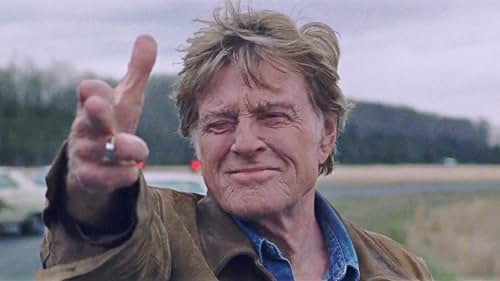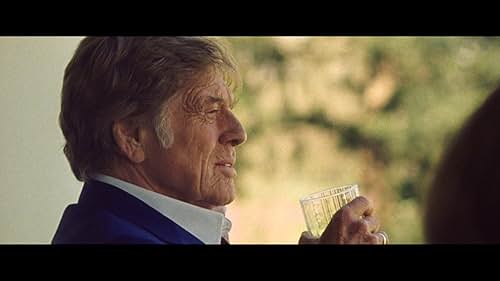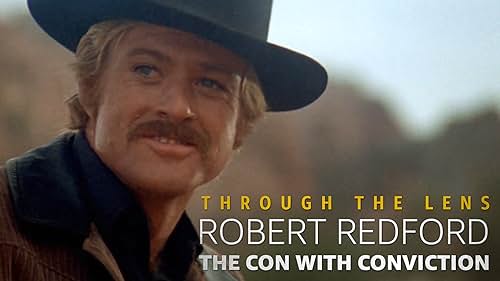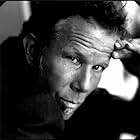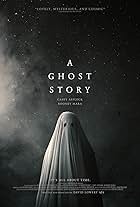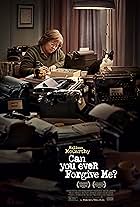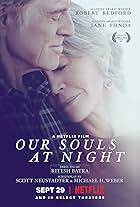Based on the true story of Forrest Tucker and his audacious escape from San Quentin at the age of 70 to an unprecedented string of heists that confounded authorities and enchanted the public... Read allBased on the true story of Forrest Tucker and his audacious escape from San Quentin at the age of 70 to an unprecedented string of heists that confounded authorities and enchanted the public.Based on the true story of Forrest Tucker and his audacious escape from San Quentin at the age of 70 to an unprecedented string of heists that confounded authorities and enchanted the public.
- Awards
- 2 wins & 12 nominations
- Mechanic
- (as Tomas 'Dutch' Deckaj)
- Director
- Writers
- All cast & crew
- Production, box office & more at IMDbPro
Storyline
Did you know
- TriviaIn an interview he gave during the 2018 Toronto International Film Festival, Robert Redford talked about this comedic film being a good note to end on, since the actor wanted his "last acting job to be fun."
- GoofsForrest is arrested in 1981 at the age of 74, which puts his birth year at 1907. But a flashback shows him as a tween breaking out of a juvenile center in 1936--when he would have been 29.
- Quotes
Stephen Beckley Jr., Esquire: I remember I sat down with him once and I said, "Forrest, surely there's an easier way for somebody in your position to make a living." And he looked at me and he said, "Brother, I'm not talking about making a living. I'm just talking about... living."
- Crazy creditsJade Healy is credited as Wallpaper Whisperer!
- ConnectionsEdited from The Chase (1966)
- Soundtracks30 Century Man
Written by Scott Walker (as Scott Engel)
Performed by Scott Walker
Used by permission of Carbert Music Inc.
Courtesy of Mercury Records Limited
Under license from Universal Music Enterprises
Telling the "mostly true" story of Forrest Tucker, Lowery's script is based primarily on David Grann's 2003 New Yorker article of the same name. By the time of the article, the 83-year-old Tucker, who had been robbing banks since his early 20s, had amassed at least 80 successful jobs and escaped from prison 18 times. Usually described by the tellers from whom he stole as "gentlemanly" and "charming", his M.O. never changed - he would walk into a bank and ask if he could open an account. When asked what kind, he would pull back his coat, showing his gun (which was often unloaded, and which he never fired), assure the teller that he didn't want any trouble, and quietly talk them through the process of emptying their till. He would then wish them the best, tell them they'd done well, and walk out. The story takes place in 1981, when Tucker was 61 (although in the film, he's 76), and had recently escaped from San Quentin. Meeting a widow named Jewel (Sissy Spacek), after pulling off a job, they strike up a tentative romance. Meanwhile, he is pursued by Det. John Hunt (Casey Affleck), who is starting to respect him more and more.
The first thing you'll notice about Old Man is its pace, which is measured, to say the least. Ostensibly, this is a heist film, but the crime narrative is very much secondary to tone and character beats. Lowery is relatively uninterested in excitement, suspense, plot twists, or any of the usual generic tropes. Instead, approaching the material casually, he focuses on a year of Tucker's life, with a tone as mellow as a film can be; rather than a shot of absinthe, it's a fine Irish malt drunk at a fireplace. Indeed, even within this structure, there's not a huge amount of character development, nor is there much of a dramatic arc. And that's not a criticism. Rather, the meditative, quasi-somnolent pace is very much one of the film's charms. Additionally, Lowery almost completely ignores what, for many, would be the most interesting part of Tucker's story - his 18 escapes. Instead, he puts them all together into one superb montage.
However, for all that, Lowery's primary goal is to create an ode to an icon, and that icon is Robert Redford. Tucker's story is a vehicle which Lowery uses to celebrate Redford; the character is always there, but he exists behind the actor, rather than the other way around. The audience is never allowed to forget that this is Robert Redford on screen, to the point where the performance is self-referential. Indeed, during the escape montage, there's even a clip of Redford from another film, The Chase (1966). There's an obvious correlation between Tucker and Redford of which Lowery wants the audience to be very aware - they are both elderly, and still doing what they do best, reluctant to stop. We can never look past the fact that Tucker is played by Redford, and for the most part, Redford is playing Redford, with the film existing in large part only because it explicitly leans on his back catalogue and real-life legacy. Essentially, the whole thing is an extended metatextual allegory for Redford's own impending retirement, not to mention his reluctance to let go.
As one would expect from Lowery, aesthetically, the film is fascinating. Lowery is very unusual in the sense that, thus far, he has never used the same cinematographer twice. Here, he uses Joe Anderson, whose cinematography is extremely unique, with the celluloid having a gritty, grainy quality, almost as if it were an amateur project. This is because Lowery shot on Super 16, doing so because he wanted it to look like it had been made in the period in which it was set. This is in direct contrast to, say, how Michael Mann shot Public Enemies (2009), with the use of fast, seemingly anachronistic, digital photography creating a sense that what was happening on screen wasn't necessarily taking place in the past, but could easily have been taking place right now. Lowery, in contrast, tries to suture the viewer into the past milieu.
Another important aesthetic point is how much Lowery has obviously been influenced by Michael Mann, to whom there are several homages - a scene in a diner recalls a similarly shot scene between James Caan and Tuesday Weld in Thief (1981); the scene in the toilet where Hunt approaches Tucker is an obvious nod to Al Pacino confronting Robert De Niro in Heat (1995); and the scene of Tucker gaining inspiration whilst sitting in a cinema recalls a scene where Dillinger (Johnny Depp) does the same thing in Public Enemies.
In terms of problems, there are a few. For many, the film will depend far too much on Redford, specifically the self-referential allusions to his career and legacy. If you're not a fan of his, you will get zero from this, absolutely nothing. Similarly, if you aren't familiar with at least some of his previous work, and his status in Hollywood, the whole thing will probably seem inconsequential. Another problem I have concerns Affleck. I know he's a celebrated actor and so forth, but for me, he plays himself in every single movie. There is virtually nothing to distinguish Hunt from Robert Ford in The Assassination of Jesse James by the Coward Robert Ford (2007) or Les Chandler from Manchester by the Sea (2016), or either of his performances in previous Lowery films. Every performance he gives, he plays a character with the weight of the world on his shoulders, shuffling around, speaking in a low-key hang-dog voice, reluctant to make eye contact, shifting on his feet.
Lowery also has a strange habit of introducing themes which seem to be setting something up, only to completely abandon them without any kind of engagement. This is most obvious in relation to Hunt's inter-racial marriage to Maureen (Tika Sumpter) and their two mixed-race children. This is a fictional element added by Lowery, so one assumes there was some thought behind it. But this is Texas in 1981; there wouldn't have been a huge amount of mixed marriages. Yet Lowery seems to portray it as if it's the most normal thing in the world. Indeed, for the wife and children, life is fairly idyllic, with not a hint of any kind of societal disapproval. Why would you introduce a mixed-race marriage into this milieu without commenting on it?
These issues aside, however, The Old Man & the Gun is a fine film. As much about Robert Redford as it is Forrest Tucker, although that won't appeal to everyone, there is much to praise. Made in a key so low, it's practically subterranean, Lowery hinges everything on Redford's presence, and, for the most part, it works well. There's little in here to get overly excited about, but neither is there much to criticise. Yes, the film is somewhat insubstantial, and there's virtually nothing here beyond the Redford/Tucker character, but it's still beautifully made, and, honestly, there's nothing wrong with spending 93 minutes hanging out with Redford, whether he's playing Forrest Tucker or Robert Redford. Whether or not this is actually his last performance remains to be seen, but if it is, it's as fine a send-off as any Hollywood icon could hope for.
Details
- Release date
- Countries of origin
- Official sites
- Languages
- Also known as
- Un ladrón con estilo
- Filming locations
- Dayton, Ohio, USA(Liberty Tower, 120 W. 2nd St., Dayton, Ohio 45402)
- Production companies
- See more company credits at IMDbPro
Box office
- Gross US & Canada
- $11,277,120
- Opening weekend US & Canada
- $142,131
- Sep 30, 2018
- Gross worldwide
- $17,860,397
- Runtime1 hour 33 minutes
- Color
- Aspect ratio
- 2.35 : 1
Contribute to this page



